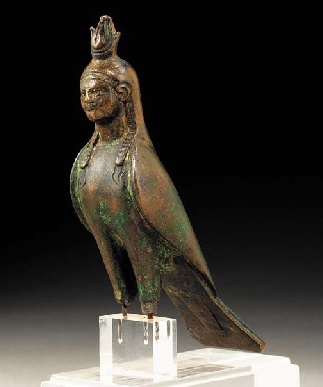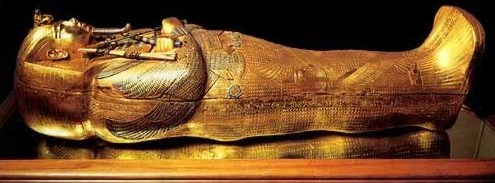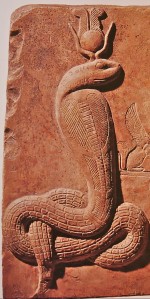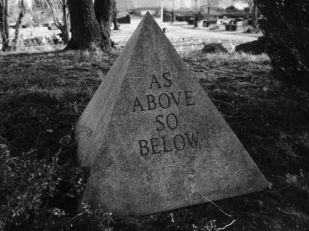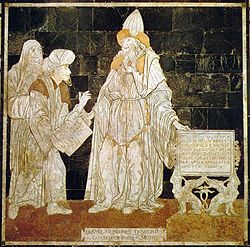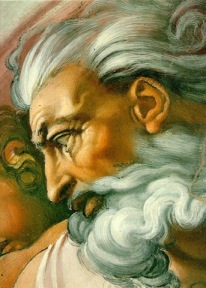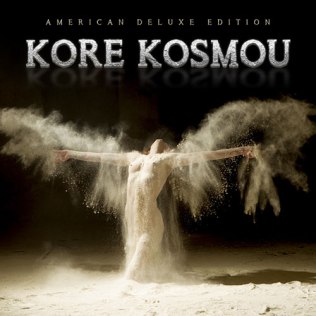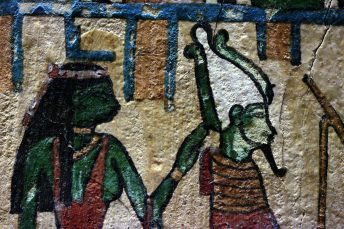Last time, we talked about the Egyptian ba—very loosely translated as the soul. When represented in tombs, the ba is shown as a human-headed bird, often a falcon or hawk, and bearing the face of the person to whom it belongs.
With their power of flight, birds have always been magical creatures to us flightless human beings. Not only in Egypt, but in many cultures throughout the world, birds of various types have been associated with death and the afterlife. In some cases, birds (especially the owl) are seen as harbingers of death. Sometimes, birds are psychopomps, guides of the dead, showing the newly-disembodied human soul or spirit the correct path to the Otherworld. Researchers have suggested that the concept of birds as spirits of the dead that have returned to earth is almost universal.
But more often than being harbingers of death, birds are associated with the idea of transcendence and rebirth, as they decidedly were in ancient Egypt. The innermost coffin was sometimes referred to as “the egg,” so you can see the power of this idea almost immediately. In the funerary literature, we also find birds in connection with the so-called “transformation” spells, which are designated in the texts by the verb kheper, “to become.” So once again, we come to that important word.
As you already know, our Goddess Isis is often depicted in birdform. She is the hawk, falcon, kestral, or swallow protecting the body of Osiris, and thus all the dead, with Her powerful wings. But sometimes, She is also shown as a human-headed falcon. In this case, we are being shown Her powerful ba kheper. If you recall last week’s post, you’ll remember that in the earliest Egyptian records, the ba is a Divine Force. That Divine Force is what we are intended to see when we find Isis in this form. It is Her Great Ba that is with us.
From an inscription at Denderah, we are told that Isis is “She Whose Ba (-Power) is Great” and “She Whose Ba is Great Among the Gods,” and even “She Whose Ba is Greater Than All the Gods.” Human beings recognize the power of Her ba: “those on earth bow to Her Ba.” (And, it is often the ba of the Deity that was understood to inhabit the Deity’s sacred image; sometimes the ka, too, but mostly the ba.)
Isis is also among the Great Goddesses Who are called Ba-et Goddesses. As a Ba-et Goddess, Isis’ ba-power is understood to be exceptionally powerful among the bau (plural) of all the other Deities. Isis is “She Who is More Mighty (Ba-et) than the Gods.” She is especially powerful in the sky: She is “The Mighty One (Ba-et) in the Sky,” “The Mighty One in the West and the East,” and She is “The Mighty One of the Bau Souls.”

This last title likely refers to Isis’ status among the Deities—a Great Ba among Great Bau. But I wonder if we might also take it as a reference to Her care of the human bau, souls, who are under Her wings.
It is Isis Who initiates the human ba into its new, transformed existence without the living body of the deceased. She is the Lady of All in the Secret Place—the Otherworld—and She is asked by the deceased in the Coffin Texts to, “spiritualize me, O You who split open my mouth for me and Who guide my soul on the paths of the Otherworld.” We are told that “Isis rejoices when She sees you (the deceased)” in the Otherworld and reciprocally, that the dead (as Osiris) rejoice when they see Her, for they know they can count on Her help in their renewal.
Isis also bestows upon the deceased power and awe so that enemies of the deceased are easily fended off. The dead are told that they are possessors of “the fear (awe or power) that went forth from Isis to Horus.” While the texts do not explicitly say so, it seems to me that Isis may have endowed the deceased with some of Her powerful and “awe-full” ba-power. In another Coffin Text, the deceased is told that “the power of Isis is your strength” and that the dead one is “more spirit (akh)-like and more soul (ba)-like” than the Southern or Northern Gods.
Isis’ concern with souls continued as Her worship entered the Graeco-Roman world. She becomes known as a Mystery Goddess—and the Mysteries were always about the Mysteries of death, rebirth, and often, the saving of souls. In Isis’ famous Mysteries, initiates learned what lay before them in the afterlife so that they lost their fear of death and could live more fulfilling lives on earth. In fact, Isis was specifically known as a Savior Goddess, which not only pertains to Her ability to initiate our souls into the Mysteries of Death and Rebirth, but also to Her saving grace in our day-to-day lives.
In a Hermetic treatise, the Kore Kosmou (“Virgin of the Universe”), Isis continued to be associated with souls. (Read more about the Kore Kosmou here, and here, and here.)
In this text, Isis describes for Horus how human souls were created and how She and Osiris devised the “magic of the prophet-priests” so that our souls could be nurtured by philosophy and our bodies could be healed by the magical arts. Other Hermetic texts depict Isis teaching about reincarnation and the true nature of our souls.
From the earliest to the latest periods, Isis has been the Lady of Souls. She has, and is, an extremely powerful ba Herself and always, always maintains Her concern with and knowledge of souls.


